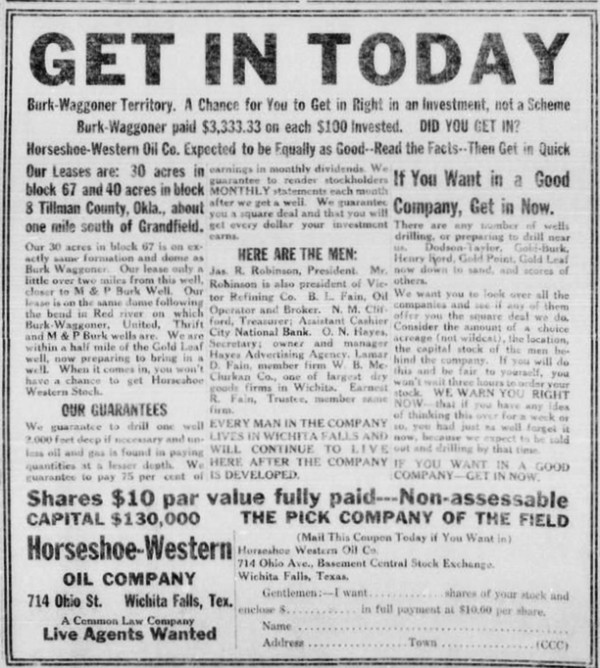
Probably formed during the North Texas oil booms of the 1920s, Horseshoe-Western Oil Company of Wichita Falls, Texas, did not leave much of a footprint after the Great Depression.
The company began with leases on 30 acres in Tillman County, Oklahoma, just across the Red River Texas border of the booming oil town of Wichita Falls.
The new company guaranteed to drill at least one well to a maximum depth of 2,000 – promising to pay 75 percent of earnings in monthly dividends to investors if the well was successful.
The company’s “Get in Today” advertisement in the Corpus Christi newspaper proclaimed riches to be had by acting quickly.
“We want you to look over all the companies and see if any offer you the square deal we do,” the company added, noting its leadership would remain in Wichita Falls. It claimed to have leases on a famous producing region.“We warn you right now – that if you have any idea of thinking this over for a week or so, you had just as well forget it now, because we expect of be sold out and drilling by that time,” the Wichita Falls oil company declared.
The Burkburnett oilfield, discovered on July 29, 1918, on S.L. Fowler’s farm, had brought thousands of people to North Texas. Twenty trains ran between Burkburnett and Wichita Falls every day.
With only $130,000 in capitalization, it does not appear Horseshoe-Western Oil Company survived. Learn more about North Texas petroleum history in Pump Jack Capital of Texas.
Please support the American Oil & Gas Historical Society with a donation.
